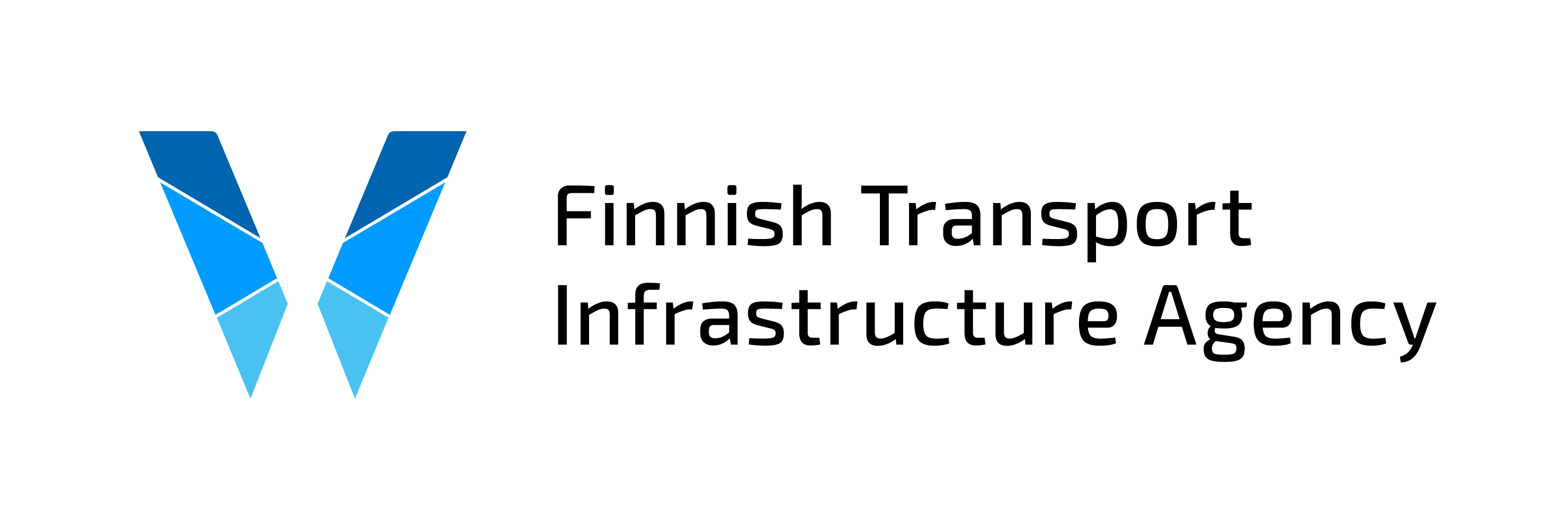Investment programme
The investment programme is a proposal for new rail, road and waterway projects and their impacts submitted by the Finnish Transport Infrastructure Agency. The latest investment programme was prepared for the period 2025–2032 and it is part of the implementation of the National Transport System Plan (Transport 12). Finnish Parliament will decide on the implementation of the development projects listed in the investment programme.
What is included in the investment programme?
Only the projects on which no funding decision has yet been made are included in the investment programme.
The investment programme includes development projects, major renovation projects and project packages as well as small-scale projects to improve basic transport infrastructure. Projects funded with EU support or jointly with urban regions or the business community are also included in the programme.
What is not included in the investment programme?
The investment programme does not include:
- ongoing projects that you can view on our website
- other projects that have already been decided upon and received funding
- projects that are not yet ready for implementation and planning.
- basic route maintenance measures, including winter maintenance and repairs of routes
- the Digirail project, which is progressing as a separate entity and which has already received partial funding.
- design projects for the Airport line, the one-hour Turku rail link and the Itärata railway, for which separate project companies have been established
Will all projects listed in the investment programme become a reality?
Not necessarily. The investment programme is a proposal for investments in the state-owned transport network compiled by the Finnish Transport Infrastructure Agency. Parliament ultimately decides on whether the development projects included in the investment programme will be carried out. The projects will be funded from the Budget.
Parliament may also grant funding for transport infrastructure projects that are not included in the investment programme.
Selection criteria
The investment programme projects have been selected on the basis of the objectives and priorities set out in the Transport 12 plan. Efficiency, sustainability and accessibility are the objectives set out in the Transport 12 plan and they are all aimed at mitigating climate change. Urgent needs, which are also set out in the strategic situational picture for the transport network, can also impact the choices.
The investment programme prepared by the Finnish Transport Infrastructure Agency is based on the information produced by impact assessments. Major impacts of each project have been identified in the impact assessment. The estimated total impacts indicate how the investment programme will help to make the Transport 12 plan and its accessibility, sustainability and efficiency targets a reality. Assessment of the total impacts of rail, road and waterway projects has been carried out on the basis of the general assessment obligation laid down in the Act on the Impact Assessment of Plans and Projects (200/2005).
Priority in the selection of projects has been on projects promoting the objectives set out in the Transport 12 plan with maximum effectiveness. However, a large number of good and necessary projects have been left outside the investment programme because the development needs total more than EUR 10 billion but only a fraction of this sum is available.
What is the funding basis for the investment programme?
The investment programme is based on the financial framework of the Transport 12 plan and the funding allocation policies. The financial framework for the investment programme (funding available for the plan) is comprised as follows:
-
Development projects, approx. EUR 2.8 billion.
-
Basic infrastructure improvement projects, approx. EUR 744 million
The programme also includes proposals on projects funded with EU support or jointly with urban regions and the business community.
The decision on the possible launching of the projects is made by the Parliament.
How is the funding for the investment programme divided by type of transport infrastructure?
The financial framework for the development projects in the Transport 12 plan totals approximately EUR 2.7 billion and it is divided as follows:
Railway network: EUR 1391 million
The investment programme contains many rail projects. The development themes concern the functioning and capacity of the railway network, connections between regional centres, station areas and railway yards as well as measures outside the main rail network.
Road network: EUR 1247 million
The investment programme contains core infrastructure improvement projects, improvement projects in the rest of the road network, and basic infrastructure improvement projects. The development themes concern the development of main routes, improvement of the operating preconditions of businesses on the rest of the road network, and central government participation in projects managed by municipalities outside LHT regions, on a co-funded basis.
Waterways: EUR 198 million
The investment programme contains medium-sized or small-scale improvement projects and other waterway development projects.
